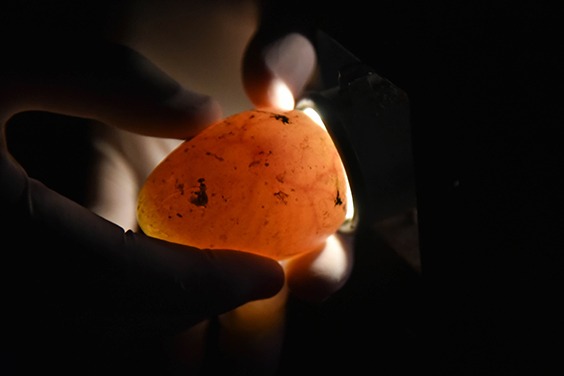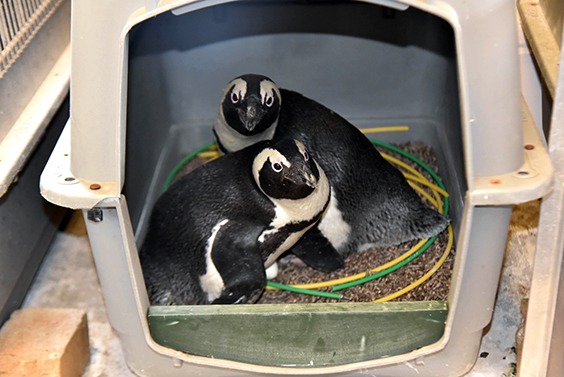If you see Penguin Coast this fall, you may think the island, normally bustling with 70+ penguins, looks a bit tamer than usual. Don’t let appearances fool you, though. Behind-the-scenes in the nest room, things are anything but mellow. It’s penguin breeding season!

More than a dozen pairs in the Zoo’s colony are recommended by the African Penguin Species Survival plan to breed this year. This means the penguin team is busy helping the pairs establish their nests, a very contentious process for the territorial birds, and monitoring the behavior of the pairs to spot breeding behavior, eggs and eventually chicks!
Right now, a few weeks into the season, keepers are focused on checking and watching eggs. African penguins typically lay two eggs per clutch and each fertile egg will hatch 38-40 days after it is laid.
The most important task penguin keepers have to do with the eggs is “candle” them. This is the process of briefly holding the egg up to a bright light to determine if the egg is fertile. Veins, like the faint red ones seen in the egg being candled in the photo below, are signs that a chick is developing inside!

After candling, the egg is quickly returned to the warmth and care of the parents. Penguins parents share the task of sitting on their eggs to keep them warm as they develop. The pair shown in their nest box (above, top) will be first-time parents if they have a chick this year! If you look closely you can see one of their eggs near their feet. Both of these penguins were hatched here at the Maryland Zoo. Over the decades that the Zoo has been a sanctuary for these endangered birds, over 950 penguins have hatched here.
Look for more breeding season and chick updates from behind the scenes at Penguin Coast on Facebook.






Share this article